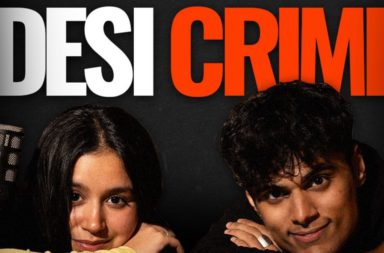One of the most significant changes that social media has seen over the past couple of years has been the rise of “influencers“. An ‘influencer’ can be termed an individual who has a sizable online following based on their knowledge, authenticity, charm, or ability to produce engaging and entertaining content in a specific field. These influencers and content creators have been able to gather a loyal fanbase who appreciate their opinions, recommendations, lifestyle, and content. This phenomena has altered the digital ecosystem in a number of ways.

In today’s scenario, influencer marketing has become wildly successful and has in turn replaced traditional advertising methods. Businesses and brands now collaborate with influencers to reach their target audience in a more personalised and relatable manner. Since they create content that seamlessly integrates products or services, it makes marketing feel more like a recommendation from a trusted friend rather than a blatant advertisement. This in turn helps the brand, as it increases their product sales and helps it grow. Brands are now making 5x more than what they spend when working with these creators.
There are 5 different types of influencer categories in the world of social media:
- Mega-Influencers
- Macro-Influencers
- Mid-Tier Influencers
- Micro-Influencers
- Nano-Influencers
Also Read: From The Creator-Verse: Creators Making Big Moves In The Industry
Let’s learn about each category in depth:
Mega-Influencers
This category comprises of influencers who have more than a million followers – think celebrities. Content creators who have been in the game since a long time now and have left an indelible mark, are now at the top of the game thanks to the love shown to them by the public. Some prime examples of mega-influencers include Prajakta Koli with 7.8M followers and Kusha Kapila with a following of 3.4M. Although, it’s important to understand that the audiences attracted by mega influencers are going to be very broad. If you’re working on a brand awareness campaign and have a large budget, mega influencers can get your products as many eyeballs as possible which is great if your brand has appeal across segments.
Macro-Influencers
With a followers range between 500K to 1 million followers, “macro-influencers” are those creators who are currently a fan-favourite. Their content has been going viral, resulting in a consistently growing fanbase. When you think macro-influencers, names like Dharna Durga (623K followers), Aakanksha Monga (722K followers), Shehzaan Khan (665K followers) pop up, just like their amazing content has been popping up on our pages. These are typically social media stars, bloggers, vloggers, or podcasters who have jumped to the status of internet-made celebrities. Macro influencers have a large audience that they’ve developed over months or years of nurturing relationships while growing followers.
Mid-Tier Influencers
Despite not having celebrity status, “mid-tier influencers” are nevertheless a significant group of content creators with a trusted following. Ranging from 50K to 500K followers, these influencers provide marketers with a broad reach and higher engagement with audiences. Think Tarini Shah with 485K followers, Ritvi Shah with 302K followers, Raghav Sharma with 172K followers. The content of these mid-tier influencers is extremely true to themselves. The authenticity of it has garnered them their existing fanbase and pushed them to the brink of virality.
Micro-Influencers
This is a category of influencers with 10K to 50K followers. “Micro-influencers” have an intimate connection with their followers and tend to be more niche-focused. Their content may not look as polished but may feel more authentic than the higher categories of influencers. Micro-influencers are viewed as relatable and tend to have an engaged and targeted audience. You can see that in the content created by influencers like Md Anas (26.2K followers), Sufiyan Junaid (40.9K followers) and Neha Parulkar (49.6K followers). Studies suggest that consumers are more likely to buy a product recommended by a micro-influencer. They are the kind of creators who could speak about a particular brand or product and end up being noticed by them, and eventually create a partnership that benefits both parties.
Nano-Influencers
With the follower count ranging between 1K to 10K followers, “nano-influencers” have the highest engagement rate of any influencer type, at 8.8 percent. Take Surbhi Rohra with 7.9K followers and Vrinda Khurana with 7K followers; their content is hyper-authentic and extremely personalised for their audience. Nano influencers are typically very vocal advocates of the brands and products they love which is appreciate by their followers. Owing to their authentic recommendations and commentary, they have built a very close relationship with their followers and they take the time to often engage with them to cultivate those relationships. If a smaller brand or business wishes to try out one of their new products in the market via influencer marketing, partnering with nano-influencers is the best way to go about it.
P.S. The follower count of influencers is a metric that is highly volatile in nature. The numbers mentioned above are subject to change.
How interesting was that, right? We’re back to binging on all of our favourite creators’ content!


